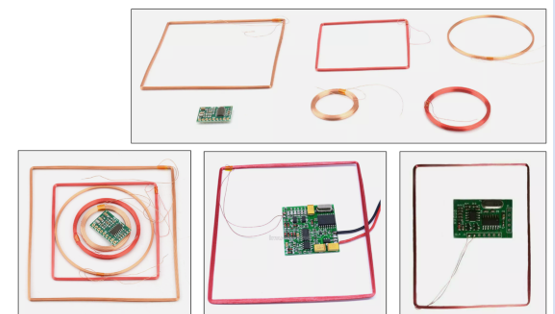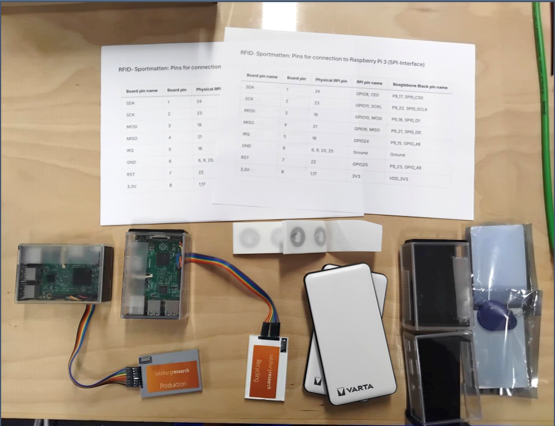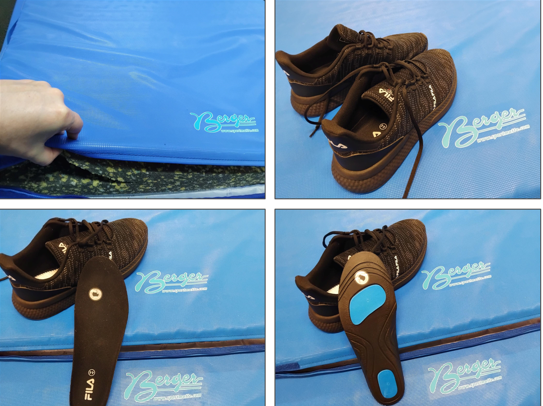Customer: Berger GmbH
CiMo Partner: Salzburg Research
Challenge
It was evaluated on whether the standard NFC technology that uses 13.56 MHz is sufficient for implementing an intelligent sport matrice that can automatically connect to an NFC tagged sport shoe. The main problem with other technologies is that they dont hold the user’s authentification, which NFC does. Main challenges were the limitations of the antenna gain and general NFC reach when using only 13.56 MHz. The wider the disered trusted covered matrice area, the more demanding the power supply. Ideal positioning of the created system inside the matrice to cover a wide enough contact area for the shoe and dealing with different types of contact angles when running over the matrice were additional challenges. Likewiese, finding ideal positions for NFC-Tags inside the shoes had to be tested. Since users would step on the system a solid casing had to be created.
Methods
The created prototype technology is intended as a feasibility proof. It currently simply measures the time when running over the matrice, but it can also be used to exchange any kind of data created during running. The antenna currently performs at 18, 23, or 29 db only, but this was already enough to demonstrate feasibility. The RC522 antenna does support higher antenna gains of 35, 38, 43, and 48db, but the used raspberry pi board can’t continously support it with the required power supply to operate at higher dbs.
Prototype System created with:
Raspberry Pi Modell 3B
NFC-Communication SW based on “pi-rc522”
NFC-Antenna-Module (RC522, 13.56 MHz)
NFC-Tag-Sticker (Ntag213)
VARTA Powerbank 10.000 mAh



Result
The created prototype technology demonstrated that the idea of using standard NFC for an intelligent matrice design is sufficient, especially when powered with stronger boards than Raspberry Pi. The advantage of using NFC is that the user’s identity can be automatically evaluated whenever running over the matrice. In order to create a marketable product, it is strongly recommended that the presented solution is re-implemented with a stronger hardware board (e.g. ESP32). If full matrice surface area coverage is desired, it is recommended to design either a custom antenna or use long range circular antennas like e.g. NFC antennas that are currently used for pet door automation. Currently, follow up projects are being discussed to involve real sport teachers from different Austrian and german schools in the development process. Different use cases are being discussed, as well as different methods on how to charge the matrice during or after sport lessons.